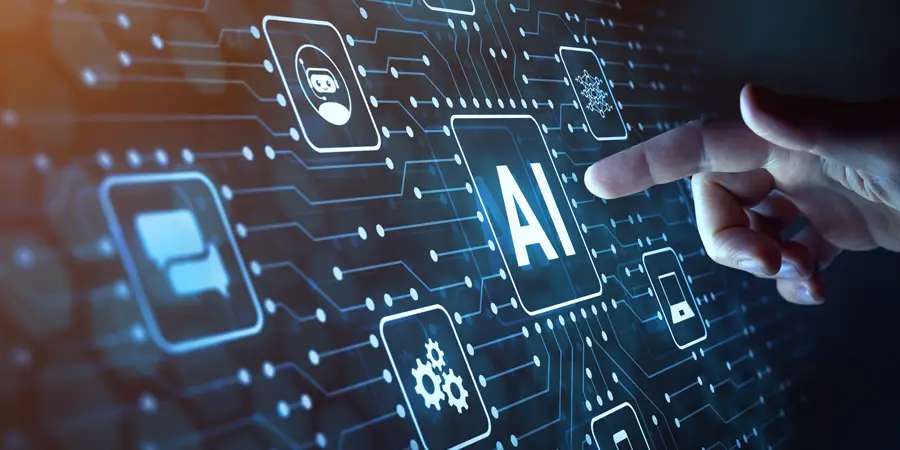The AI Space Odyssey in India: Revolutionising Cosmic Discovery



India embarked on its remarkable journey into space in 1962, a year following John F. Kennedy’s visionary commitment to land an American on the moon within a decade. However, it was in the subsequent decades, particularly during the 1970s and 80s, that the Indian Space Research Organisation (ISRO) gained substantial momentum, marking the foundation of India’s formidable presence in the cosmos. During this period of growth, ISRO harnessed the power of satellites to revolutionize various aspects of Indian society. Notably, they employed satellites to meticulously map and survey crops, enabling better agricultural planning and resource allocation. ISRO’s satellites also played a crucial role in monitoring and mitigating the impact of natural disasters, erosion, and other environmental challenges.
These remarkable achievements in space exploration not only enhance India’s technological prowess but also bring immeasurable prestige to the nation on the global stage. It’s worth noting that India’s accomplishments in space exploration stand on their own merit, and comparisons to other spacefaring nations, highlight India’s dedication to excellence in this awe-inspiring endeavor.
In this article, I delve into the AI Space Odyssey in India and how it is transforming the country’s cosmic exploration endeavors. The integration of AI into India’s space program is not only a testament to scientific innovation but also a symbol of India’s unwavering commitment to pushing the boundaries of human knowledge. As the AI Space Odyssey unfolds in India, it holds the promise of unlocking the mysteries of the cosmos and expanding our horizons in ways that were once unimaginable. In fact, ISRO is associating with many universities like IITs and IIScs also for collaborative work in space. In The NorthCap University Gurugram also we have ISRO Navic Lab and using the resources in our research components. Space technology has many interesting dimensions to further study and research. Absolutely, artificial intelligence (AI) has the potential to contribute significantly to space technology in various ways, revolutionizing space exploration and research. Here are some key areas where AI can make a substantial impact:
- Autonomous Navigation: AI can enable spacecraft to navigate autonomously in real time. This is crucial for missions to distant celestial bodies where communication delays with Earth can be significant. AI algorithms can help spacecraft make critical decisions, adjust trajectories, and avoid obstacles, ultimately enhancing mission success.
- Data Analysis and Pattern Recognition: Space missions generate vast amounts of data from instruments, telescopes, and sensors. AI algorithms are adept at processing and analyzing this data efficiently. They can identify patterns, anomalies, and objects of interest, facilitating scientific discoveries and insights into cosmic phenomena.
- Robotics and Planetary Exploration: AI-driven robots and rovers are deployed on missions to planets, moons, and asteroids. These robots can adapt to challenging terrains, make navigation decisions, and perform scientific experiments autonomously. They extend the reach of human exploration and contribute to our understanding of other celestial bodies.
- Space Telescopes and Observatories: Space-based telescopes like the Hubble Space Telescope and upcoming instruments like the James Webb Space Telescope use AI to optimize their observations. AI algorithms help select observation targets, adjust instrument settings, and maximize the scientific yield of these missions.
- Exoplanet Discovery: AI has played a significant role in identifying exoplanets beyond our solar system. Machine learning algorithms can detect subtle variations in starlight, leading to the discovery of thousands of exoplanets. This has expanded our knowledge of planetary systems in the universe.
- Spacecraft Health Monitoring: AI is utilized for monitoring the health and status of spacecraft and satellites. It can predict equipment failures, assess system performance, and recommend maintenance or adjustments, ensuring the longevity of space missions.
- Deep Space Communication: AI can enhance communication systems by optimizing data transmission and reception. This is particularly valuable for missions to distant locations where maintaining reliable communication is challenging.
- Space Resource Exploration: AI-driven robots could be employed to mine resources on celestial bodies like asteroids or the Moon. This could support future space missions by providing essential materials for construction, propulsion, or life support.
- Human-AI Collaboration: AI can assist astronauts during deep-space missions by providing real-time data analysis, decision support, and even mental and emotional support. Human-AI collaboration will be crucial for long-duration space missions.
- Enhanced Scientific Discoveries: AI can help scientists sift through vast datasets from space missions, enabling them to make new discoveries, such as identifying new celestial objects, unraveling cosmic mysteries, and advancing our understanding of the universe.
- Generative Design: In the field of spacecraft design, generative design is proving to be an invaluable tool. It offers a diverse range of possibilities for critical components such as antennas, solar panels, and propulsion systems. By inputting specific specifications like material properties, weight restrictions, and functional requirements, engineers are able to leverage AI technology to generate designs that not only meet these criteria but often surpass them. This exciting technology is continually pushing the boundaries of what can be accomplished in spacecraft design.
Recently, India has taken significant strides in the realm of reusable space technologies, leading various experiments and trials. Artificial intelligence (AI) has played a crucial role in revolutionizing the recovery and refurbishment of launch vehicles, making it feasible to launch spacecraft into space more frequently. By continuously learning from each mission’s performance and implementing improvements, AI has proved to be vital in realizing the potential of launch vehicle reusability, ultimately resulting in a reduction in the overall cost of space exploration. Furthermore, the integration of AI and machine learning (ML) in India’s space program goes beyond hardware development and mission planning. It is transforming the way data is analyzed and interpreted. In fact, the Indian Space Science Data Centre (ISSDC) relies on ML algorithms to efficiently process and categorize data, paving the way for more accurate and insightful findings.
ISRO relies on robust data categorization methods to enhance the accuracy and depth of its findings. In order to effectively manage its computer network, systems, and simulations, ISRO utilizes advanced software that is specifically developed for this purpose. This software is created at various centers, such as the Space Application Centre, and is part of a larger network of centers and ground stations that are overseen by the ISRO Telemetry Tracking and Command Network (ISTRAC). Both Linux and Windows platforms are utilized by ISRO, and the software is designed to work seamlessly on both. While JAVA is the preferred language, ISRO also uses a range of other languages, including C, C++, C#, Python, Perl, and others depending on the specific needs of each project. In satellite operations, multiple programming languages are often employed at different levels, depending on the complexity and requirements of the task at hand. Data handling often relies on the use of Field-Programmable Gate Arrays (FPGAs), particularly through the use of VHDL. In contrast, the Attitude and Orbit Control System takes advantage of ADA, along with other languages such as PASCAL. Furthermore, C, Lua, and Python are popular choices for handling data in nanosatellite applications.
Artificial Intelligence Used in Recent Missions of ISRO
Artificial intelligence (AI) played a crucial role in guiding the Pragyan rover during the Chandrayaan-3 mission to the Moon. The AI algorithms were responsible for steering the rover, helping it navigate smoothly and steer clear of any obstacles on its path. Additionally, a special camera called the Lander Hazard Detection and Avoidance Camera (LHDAC) was equipped on the rover, using AI to analyze the landing area for potential hazards.
Source: https://www.autocarindia.com/auto-features/tvs-x-vs-rivals-specifications-comparison-429139
The Indian Space Research Organisation (ISRO) collaborated with the Indian Institute of Technology Madras to develop these AI algorithms. They trained the algorithms using a dataset containing images and terrain data of the Moon. The rover’s navigation system employed AI to plan its route and ensure it could navigate around obstacles effectively.
This integration of AI in the Chandrayaan-3 missions not only demonstrated technological prowess but also highlighted the potential of AI in making space exploration more efficient, safer, and cost-effective.
Machine learning algorithms can be used to classify different types of terrain (e.g., rocks, craters, flat areas) based on sensor data, helping the lander choose a safe landing site.
Autonomous Landing: Autonomous algorithms take control of the lander’s descent and landing sequence, making adjustments in real-time to ensure a safe touchdown.
Artificial intelligence-enabled Vyommitra — a female-looking spacefaring humanoid robot designed for India’s first unmanned Gaganyaan mission
Source: https://images.app.goo.gl/pUn6GEGHY8Km5eWk7
Indian Space Research Organisation (ISRO) has been actively utilizing artificial intelligence (AI) in various space missions and applications. The synergy between these fields holds the promise of shaping a more interconnected and sustainable future for humanity.
Authored By
Dr Meghna Sharma
Associate Prof.
Associate Head & Data Science Specialisation Lead
Department of Computer Science and Engineering, NCU
https://www.linkedin.com/in/meghna-sharma-a87a6436/
Broad Research Areas: Artificial Intelligence and Machine Learning














